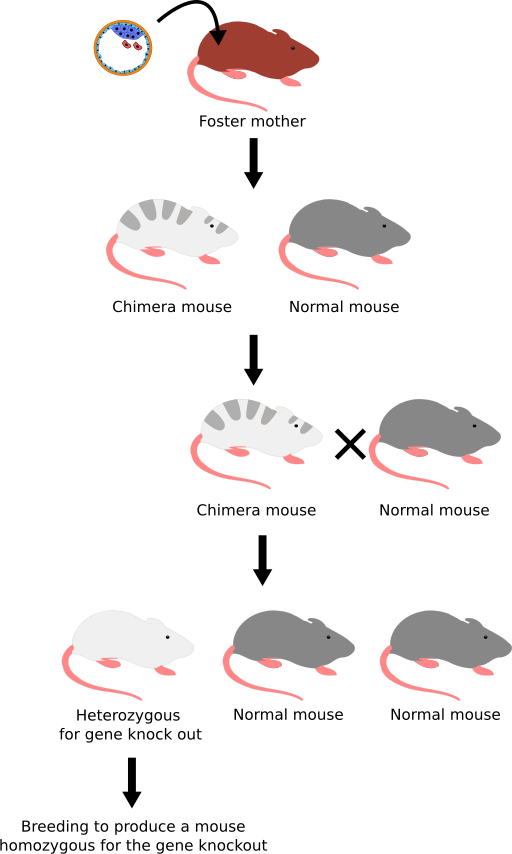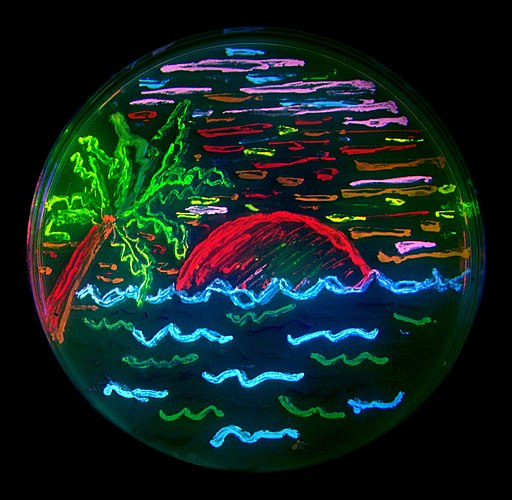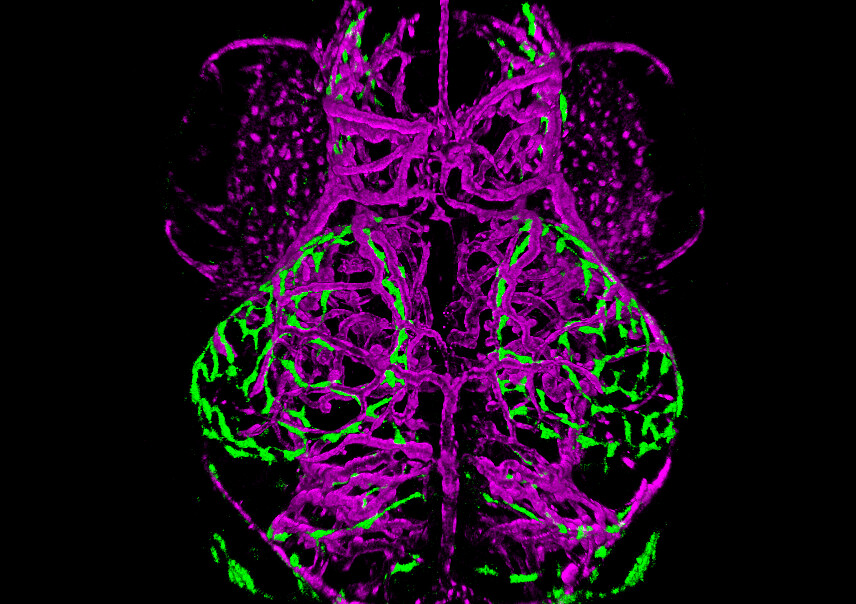Knock-Out & Transgenesis

Credit: Kjaergaard (CC-BY- 3.0)
In the laboratory, model organisms are modified in order to understand the basic mechanisms of genes. The transformation of recombinant DNA into bacteria is an example of a genetic modification. Other model organisms, like mice, are used to study genes. Through recombinant DNA scientists can selectively ablate a gene, or create a knock-out (KO).
Embryonic Stem (ES) cells are pluripotent cells with the capacity to differentiate into other cell types. Cultured ES cells can be transfected with plasmid DNA in order to genetically alter them. Linearized vectors containing a disrupted gene can homologously recombine with the native gene to replace it. Selection of cells with the disrupted gene by an antibiotic (like G418) enables the isolation and propagation of engineered ES cells.

Credit: Kjaergaard (CC-BY- 3.0)


Credit: Smartse (CC-BY-SA 3.0)
Scientists can also overexpress or heterologously express foreign genes in what are termed transgenic organisms. As the name sounds, transgene refers to a gene from one place brought across into another.
Transgenic and KO models permit scientists to study the roles of genes inside the organism and understand basic functioning.
Through mutagenesis, derivatives of the green fluorescent protein (GFP) have been produced to provide a palette of colors. Additionally, the subsequent discovery of similar genes from other cnidarian species have aided biotechnology by providing tracer molecules within developing organisms or within cells.

Bacteria expressing various GFP derivatives on agar from the lab of Nobel Laureate Roger Tsien.

A “brainbow” is a system where a cassette of GFP variant genes are placed downstream of neuronal promoter to permit the tracing of individual neurons and their axons in mice. Credit: Jeff W. Lichtman and Joshua R. Sanes (CC-BY 3.0)

Brain of a 10-day old double transgenic zebrafish. Blood vessels are shown in magenta (Kdrl:mcherry) and a novel population of perivascular endothelial cells are shown in green (MRC1a:eGFP).
Further Reading

